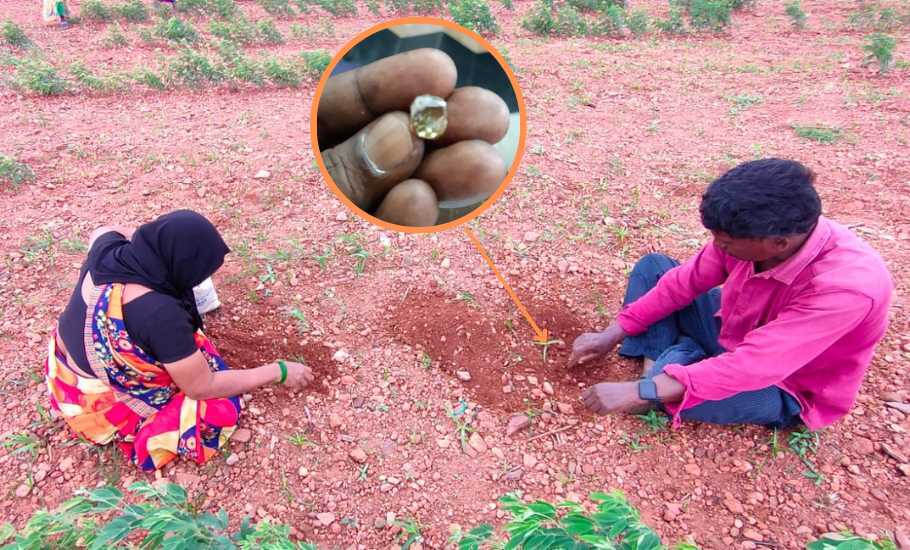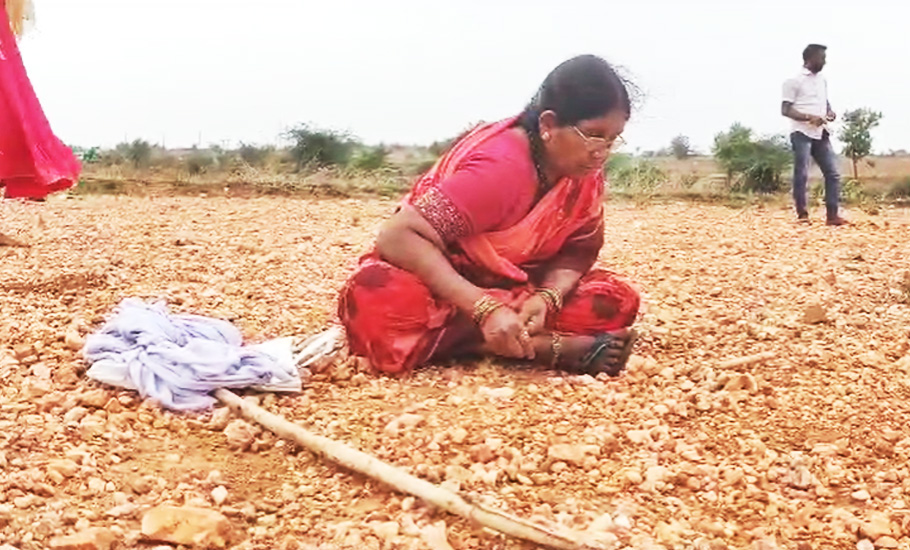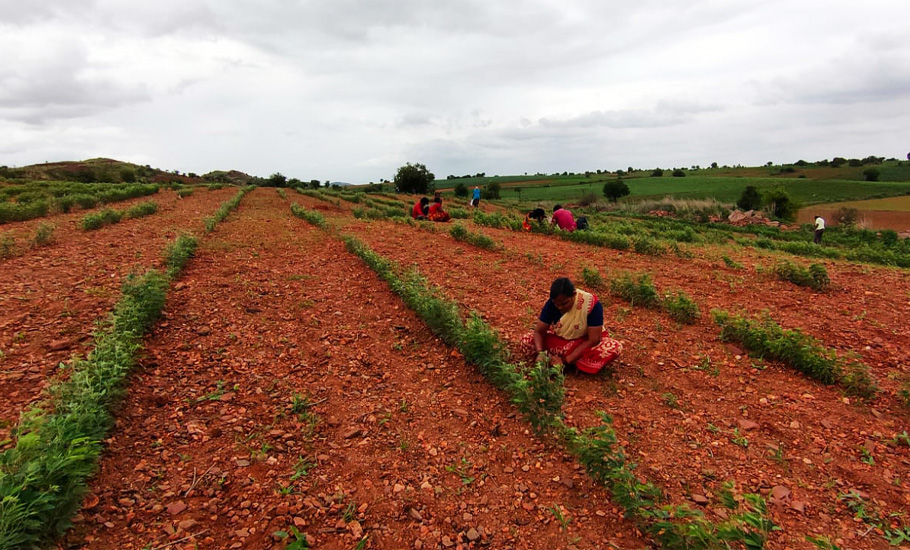
- Home
- News
- Analysis
- States
- Perspective
- Videos
- Education
- Entertainment
- Elections
- World Cup 2023
- Features
- Health
- Business
- Series
- Economy Series
- Earth Day
- Kashmir’s Frozen Turbulence
- India@75
- The legend of Ramjanmabhoomi
- Liberalisation@30
- How to tame a dragon
- Celebrating biodiversity
- Farm Matters
- 50 days of solitude
- Bringing Migrants Home
- Budget 2020
- Jharkhand Votes
- The Federal Investigates
- The Federal Impact
- Vanishing Sand
- Gandhi @ 150
- Andhra Today
- Field report
- Operation Gulmarg
- Pandemic @1 Mn in India
- The Federal Year-End
- The Zero Year
- Premium
- Science
- Brand studio
- Home
- NewsNews
- Analysis
- StatesStates
- PerspectivePerspective
- VideosVideos
- Entertainment
- ElectionsElections
- Sports
- Loading...
Sports - Features
- BusinessBusiness
- Premium
- Loading...
Premium

From Emperor Ashoka to Gousia Begum, how Kurnool’s diamond hunt continues to keep everyone hooked

Stories of people who became rich overnight after they stumbled upon diamonds, brought Gousia Begum (48), a bidi roller, to the fields of Tuggali village, 90 kms away from her home in Andhra Pradesh’s Kurnool town. Dhara Veeraiah, a 66-year-old farmer from a faraway Guntur district arrived in Jonnagiri along with his wife, son, and daughter-in-law to try his luck for the fourth time....
Stories of people who became rich overnight after they stumbled upon diamonds, brought Gousia Begum (48), a bidi roller, to the fields of Tuggali village, 90 kms away from her home in Andhra Pradesh’s Kurnool town.
Dhara Veeraiah, a 66-year-old farmer from a faraway Guntur district arrived in Jonnagiri along with his wife, son, and daughter-in-law to try his luck for the fourth time. Fortune is yet to smile on him. Twenty-seven-year-old Lakshmi of Anantapur travelled 90 km along with her three-year-old son to dig diamonds in the fields near Madhanandapuram. She was one among many farm labourers, hotel workers, small-time traders, women, and educated youth who thronged the area to excavate every inch of the fields for that elusive diamond.
While at many places, diamonds need deep mining, in Tuggali mandal they lie buried in the surface soil, leading to a diamond rush.
When monsoons arrive, farmers till their land for sowing. In early rains, the topsoil in the field gets washed away exposing the diamonds to sun rays which make them shine with brilliance which is called adamantine lustre. “It is easy to discover them in the early monsoons because of the brilliant shining,” said a farmer near Jonnagiri village.

The mad rush for diamonds is triggered every year by reports in Telugu newspapers which start with the first monsoon showers in the area, especially the regions of Jonnagiri, Peravali, Pagidirai, Tuggali, Maddikera, P Kothur and Chinna Jonnagiri villages.
The newspapers on a daily basis carry reports of a farmer or farm labourer finding a diamond while working in the field and selling it to a Mumbai trader for as high as Rs 20 lakh to Rs 30 lakh. The reports never identify the lucky person who stumbled upon the gem. Still lured by the news, people not only from Andhra Pradesh districts, but also from neighbouring Karnataka districts, flock to the region in droves, to try their luck. While tenacious hunters search for weeks living in temples and make-shift huts, many skip their work for a day or two to embark on the treasure hunt with July being the most opportune month to stumble upon the diamonds.
Locals say the diamond hunt is not new and has been going on since time immemorial.
“The media has converted the activity into a mela. The process of finding diamonds is an old occurrence which had been going silently,” said a revenue official.
“The area is full of diamonds and is controlled by six traders who formed a syndicate to buy the diamonds. Very few people bypass them to sell to traders from Mumbai or other places. Who the fortunate men are and who they sell it to are a closely-guarded secret,” said a local journalist. Traders post their agents to keep a watch on the people searching for the diamonds and direct those who chance upon diamonds to their bosses.
A trader from Peravali village said diamonds were being unearthed for centuries in this area. “My family has been into trading for 100 years. Farmers and outsiders depending on their luck chance upon diamonds of varying sizes. The news is 100 per cent true. The media often sensationalises it by quoting huge prices,” he said.
Stating that this year so far only six diamonds had been discovered, he said on average 100 diamonds are unearthed every year. The minimum amount his family paid for a diamond was Rs 5 lakh while the maximum was Rs 30 lakh. He refused to give more details. Another trader in the village is his brother.
“Together they control most of the trade,” Peravali villagers said.

When asked about the absence of any commotion in the village, he said any publicity would have severe repercussions. “There is a possibility of harassment by politicians, local rowdies, police, and revenue officials for money. To avoid negative fallout, the farmers lie low and silently approach the traders to sell it. They mostly buy land and gold with the proceeds,” he said.
Local revenue officials and police told The Federal that this area was rich in diamonds and the news reports, though vague, were true.
“When news of the discovery of a high-value diamond appears in the media, the revenue department does launch an inquiry which invariably finds nothing. Because nobody comes forward to talk about their finding,” a revenue official said. Officials from the state’s Geology and Mining Department also confirmed the existence of diamonds in the Tuggali area.
The Ashoka connection
Local lores claim that even kings had been involved in this diamond hunt.
“This place has been attracting not only people, but also drew kings for more than 2000 years. The list of kings includes even Mauryan Emperor Ashoka (269-231BCE) who erected a rock edict at Erragudi village, close to Jannagiri village, in the 3rd century BCE. Why else did Ashoka take particular interest to visit Erragudi, a politically insignificant dry area, and made Jonnagiri, then known as Swarnagiri his southern capital,” asked T Rajasekhar, deputy director, Mining and Geology, Kurnool.
According to Rajasekhar, who is also an amateur historian, though politically and agriculturally insignificant, this area is full of gold deposits besides diamonds. “Ashoka might have heard about the gold mining and excavation of diamonds in this area. Having known the reputation of the area, he might have chosen to visit the area and erected the rock edict as a memorial,” he said, stating that there couldn’t be any other great reason for making Swarnagiri his southern capital.
While gold mining is still taking place in the area, the existence of diamonds is a mystery because the area has no kimberlite, the parent rock of diamonds. Then, where have these diamonds come from? Folklore says they had fallen out of the ornaments of kings and soldiers when they fought wars in this area.
Geologist Rajasekhar has a different theory. He says these diamonds might have been transported to this place from the kimberlite zones in neighbouring areas, especially Wajrakarur.
Wajrakarur kimberlite field
Wajrakarur is a village in neighbouring Anantapur district. Wajra means diamond in Telugu and is a pointer to the existence of diamonds. According to professor B Veeraiah of the Geophysics Department, Osmania University, Hyderabad, Wajrakarur forms one of the two important Kimberlite Fields (WKF) of Dharwad Craton, the other being Narayanpet Kimberlite Field (NKF) in Telangana. “While diamonds are discovered in WKF, they are absent in NKF. The diamonds from WKF somehow might have made their way to the Tuggali area,” he said.
Dr Guttur Naveen, from the Geology Department of Sri Venkateswara University, Tirupati, said though there was another diamondiferous zone at Banaganipalli in the district, the most plausible source for Tuggali diamonds is the Wajrakarur Kimberlite Field.

“Diamonds were formed nearly 1100 million years ago in the earth’s crust under extremely high temperature and pressure. It was at that time some churning was taking place in the crust of the earth. When volcanic eruption takes place, the lava carries along with it diamonds as well. They might have reached Tuggali by two kinds of phenomenon: 1. When the volcano erupted the diamonds might have been ejected up to Tuggali, or 2. They might have been transported by streams or paleo rivers from WKF to the Tuggali area,” Dr Naveen said.
Rajasekhar said the diamond hunt in Tuggali could not be brought under control as the area is not a source of diamonds. “The diamonds have been transported from some unknown place. People are stumbling upon them by accident. So, the hunt cannot be restricted,” he said.

